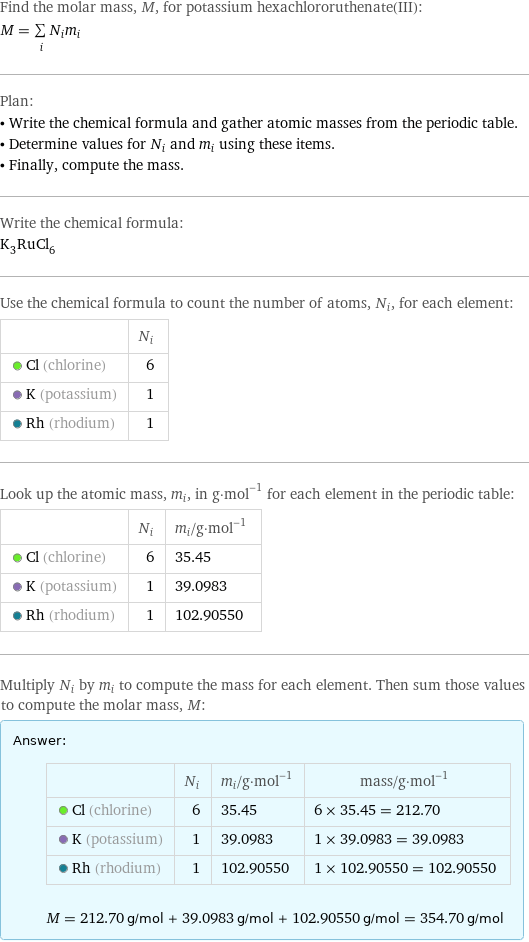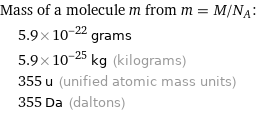Input interpretation

potassium hexachlororuthenate(III) | molar mass
Result

Find the molar mass, M, for potassium hexachlororuthenate(III): M = sum _iN_im_i Plan: • Write the chemical formula and gather atomic masses from the periodic table. • Determine values for N_i and m_i using these items. • Finally, compute the mass. Write the chemical formula: K_3RuCl_6 Use the chemical formula to count the number of atoms, N_i, for each element: | N_i Cl (chlorine) | 6 K (potassium) | 1 Rh (rhodium) | 1 Look up the atomic mass, m_i, in g·mol^(-1) for each element in the periodic table: | N_i | m_i/g·mol^(-1) Cl (chlorine) | 6 | 35.45 K (potassium) | 1 | 39.0983 Rh (rhodium) | 1 | 102.90550 Multiply N_i by m_i to compute the mass for each element. Then sum those values to compute the molar mass, M: Answer: | | | N_i | m_i/g·mol^(-1) | mass/g·mol^(-1) Cl (chlorine) | 6 | 35.45 | 6 × 35.45 = 212.70 K (potassium) | 1 | 39.0983 | 1 × 39.0983 = 39.0983 Rh (rhodium) | 1 | 102.90550 | 1 × 102.90550 = 102.90550 M = 212.70 g/mol + 39.0983 g/mol + 102.90550 g/mol = 354.70 g/mol
Unit conversion

0.3547 kg/mol (kilograms per mole)
Comparisons

≈ 0.49 × molar mass of fullerene ( ≈ 721 g/mol )

≈ 1.8 × molar mass of caffeine ( ≈ 194 g/mol )

≈ 6.1 × molar mass of sodium chloride ( ≈ 58 g/mol )
Corresponding quantities

Mass of a molecule m from m = M/N_A: | 5.9×10^-22 grams | 5.9×10^-25 kg (kilograms) | 355 u (unified atomic mass units) | 355 Da (daltons)

Relative molecular mass M_r from M_r = M_u/M: | 355